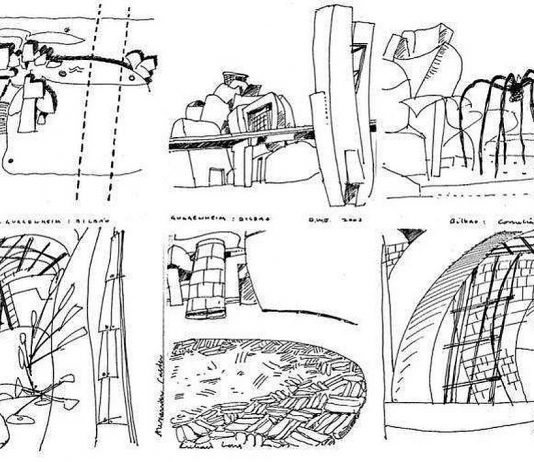Guarino Guarini: the First ‘Baroque’ architect
In her contribution to the conference Guarino Guarini e l’internazionalità del barocco of 1968, silvia bordini presented a historical overview of the criticism of...
Architecture and oblivion. The Great Temple of Tenochtitlan
The majority of the Mayan cities, including those of the Classical period (roughly 250–900 CE) were rather dispersed settlements, adapted to a lowland tropical...
Composition
An appreciation of composition is particularly important when drawing buildings and cities. The abstract nature of architecture means that sketches have to be well...
Line and shade
Sketching the outline of objects can lead to rather featureless and abstract drawing. Although one may recognise the shape of a house, its value...
Perspective
An understanding of perspective is essential in order to gain a full appreciation of the aesthetic quality of towns, and is necessary in order...
The Giza Pyramids
Most likely responding initially to practical needs—such as restoring landmarks destroyed by the Nile’s annual flooding, estimating the volume of a stone block, or...
Mesopotamia: The Oval Temple
Without humans settling down more or less permanently at specific locations, the erection of large and complex edifices would have been an unimaginable feat;...
The Terra Amata Huts
Unlike clothes, buildings cannot be squeezed into the back of our closet or taken to the local charity shop when no longer in fashion;...
Structuralism
In the 1950s a group of architects broke away from the mainstream modernist organization CIAM and began to take architecture in new directions. These...
Townscape
The townscape movement emerged after the Second World War as a way of looking at how towns grew organically and how planners should respect...
Metabolist architecture
The Japanese group known as the Metabolists proposed a new kind of architecture based on values of adaptability and change. Their visionary designs included...
Archigram
The British group Archigram formed in the 1960s as a forum for architectural discussions and ideas. Its projects existed mainly on paper, but its...
Why draw?
There is an undisguised air of evangelism running through this book, for it seeks to encourage students of architecture, craft and design to forsake...
The benefits of drawing
The act of drawing is an important starting point for the intellectual process we call ‘design’. To be able to draw a chair or...
Neorationalism
The Italian movement known there as la Tendenza explored a way of building that was at once new and responsive to the shapes, forms...
Brutalism
The style known as brutalism was a bold, distinctive version of modernism that became popular in the 1960s. Typified by extensive use of concrete...
Heritage
The way we have looked at historical buildings has changed greatly over the past 150 years. From being all but ignored by the authorities,...
Segregated planning
Mass car ownership and the increased traffic it brought posed a major challenge to architects and planners. For decades, the obvious solution seemed to...
